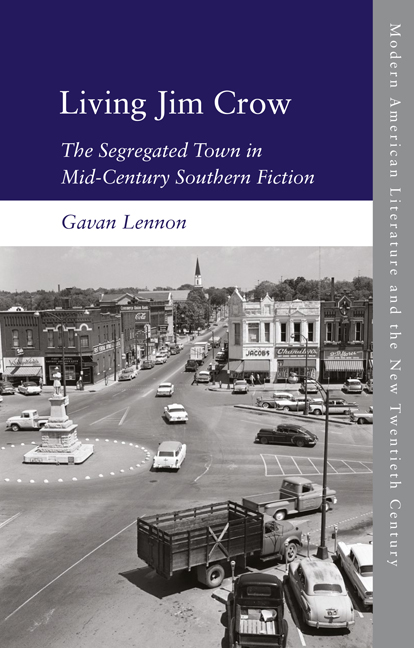Book contents
- Frontmatter
- Contents
- Acknowledgements
- Introduction: Uncovering a Poetics of Protest
- 1 Creators of the Small Town: Anthropology, Racial Etiquette and African American Fiction in the 1930s
- 2 The White Town/Coloured Town Paradigm: Lillian Smith’s Maxwell
- 3 An Anatomy of Critique: Byron Herbert Reece’s Tilden
- 4 The Milan Cycle: Carson McCullers’s Milan
- 5 Breaking the Pencil: William Faulkner’s Jefferson
- 6 Knowing How to Curse: William Melvin Kelley’s Sutton
- Conclusion: (De)Generative Ground – The Field and the Segregated Town
- Notes
- Bibliography
- Index
2 - The White Town/Coloured Town Paradigm: Lillian Smith’s Maxwell
Published online by Cambridge University Press: 15 October 2020
- Frontmatter
- Contents
- Acknowledgements
- Introduction: Uncovering a Poetics of Protest
- 1 Creators of the Small Town: Anthropology, Racial Etiquette and African American Fiction in the 1930s
- 2 The White Town/Coloured Town Paradigm: Lillian Smith’s Maxwell
- 3 An Anatomy of Critique: Byron Herbert Reece’s Tilden
- 4 The Milan Cycle: Carson McCullers’s Milan
- 5 Breaking the Pencil: William Faulkner’s Jefferson
- 6 Knowing How to Curse: William Melvin Kelley’s Sutton
- Conclusion: (De)Generative Ground – The Field and the Segregated Town
- Notes
- Bibliography
- Index
Summary
On 27 May 1961 Lillian Smith received a telegram from James Farmer, national director of the Congress of Racial Equality (CORE), urging her to attend an ‘emergency meeting of [the] CORE advisory committee’ in New York. Farmer requested Smith's ‘immediate advice and help’ because the Freedom Rides were at ‘a decisive stage’. Three years later, shortly before the signing of the Civil Rights Act of 1964, Smith received another telegram, this one from President Lyndon B. Johnson, informing her that he would be establishing a ‘community relations service [to] assist communities in preventing and resolving racial disputes’. Johnson asks Smith to join, writing: ‘I urge you as a private citizen to use your leadership in the meantime to prom[o]te a spirit of acceptance and observance in your own community and business area.’ In pencil, on the reverse of Johnson's telegram, Smith drafted a response indicating that she would be ‘honored’ to serve in such a capacity and that she would do all she could ‘as a citizen and a writer to help’. What emerges from this correspondence is an image of Smith as repeatedly called upon to offer a practical contribution to the movement in the early 1960s. That Smith considered her efforts to relate to the roles of ‘citizen and writer’ begins to suggest how the novelist, memoirist and journalist understood her written output to be an extension of her moral and practical commitment to desegregation.
This commitment to activism and writing is anticipated in the novel through which Smith rose to national prominence, the controversial and popular Strange Fruit (1944). Within a month of its publication, 140,000 copies were in print and within ten months the novel had sold almost half a million copies, figures that Lawrence P. Jackson identifies as ‘blockbuster statistics’. Indeed, it was the number-one fiction bestseller of the year. Along with high sales figures came more than a little notoriety; Smith's indictment of the South's segregated system meant the novel was banned in Boston on 20 March 1944, from the mail by the Post Office Department in May, and unofficially in Detroit by ‘gentleman's agreement’. In her later non-fiction writing, Smith was vocal in seeking an immediate and uncompromising end to segregation, rather than a gradual decline.
- Type
- Chapter
- Information
- Living Jim CrowThe Segregated Town in Mid-Century Southern Fiction, pp. 49 - 84Publisher: Edinburgh University PressPrint publication year: 2020



